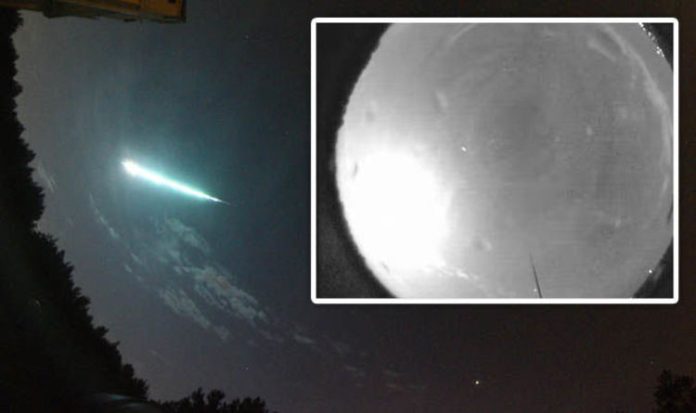A bright flash in the night sky was visible for hundreds in more than a dozen states. What was the mysterious light?
NASA has answers.
Experts say the light, which could be seen around 10 p.m. Tuesday, Nov. 8, was a bright fireball caused by a broken off piece of an ancient comet. The piece of comet was more than a foot in wide and weighed about 100 pounds. The fireball was “brighter than the full moon” at its peak, NASA Meteor Watch said.
More than 160 people reported spotting the fireball, according to the American Meteor Society. NASA astronomers said the fireball was first sighted about 60 miles above Lancaster, Kentucky.
From Lancaster, the meteor traveled northwest at a speed of 72,000 miles per hour before it disintegrated 40 miles above the town of Nevada, Kentucky, NASA said.
Although the fireball originated above Kentucky, sightings were reported from more than a dozen states; Alabama, Georgia, Illinois, Indiana, Mississippi, Missouri, North Carolina, Ohio, Pennsylvania, South Carolina, Tennessee, Virginia, Wisconsin and West Virginia, AMS data shows.
The fireball comes during a period of increased meteor activity.
Around this time every year, Earth spends a couple months passing through a wide stream of comet debris, which creates an increase in meteor activity known as a Taurid meteor shower, according to NASA.
READ ALSO: Iran: The Islamic Republic says it has developed a hypersonic missile
Usually, only a few Taurids are visible from Earth, but some years, slight changes in orbits cause an increase in the number of Taurids close to and visible from Earth, NASA said. This can lead to a “Taurid swarm,” when the number of visible fireballs jumps and can be seen by almost everyone.
This year, Taurids will be active until Dec 2, according to the American Meteor Society. Peak activity was on Saturday, Nov. 5, but “good activity” is expected to last throughout the following week.
Lancaster is about 35 miles south of Lexington.
Original Post














